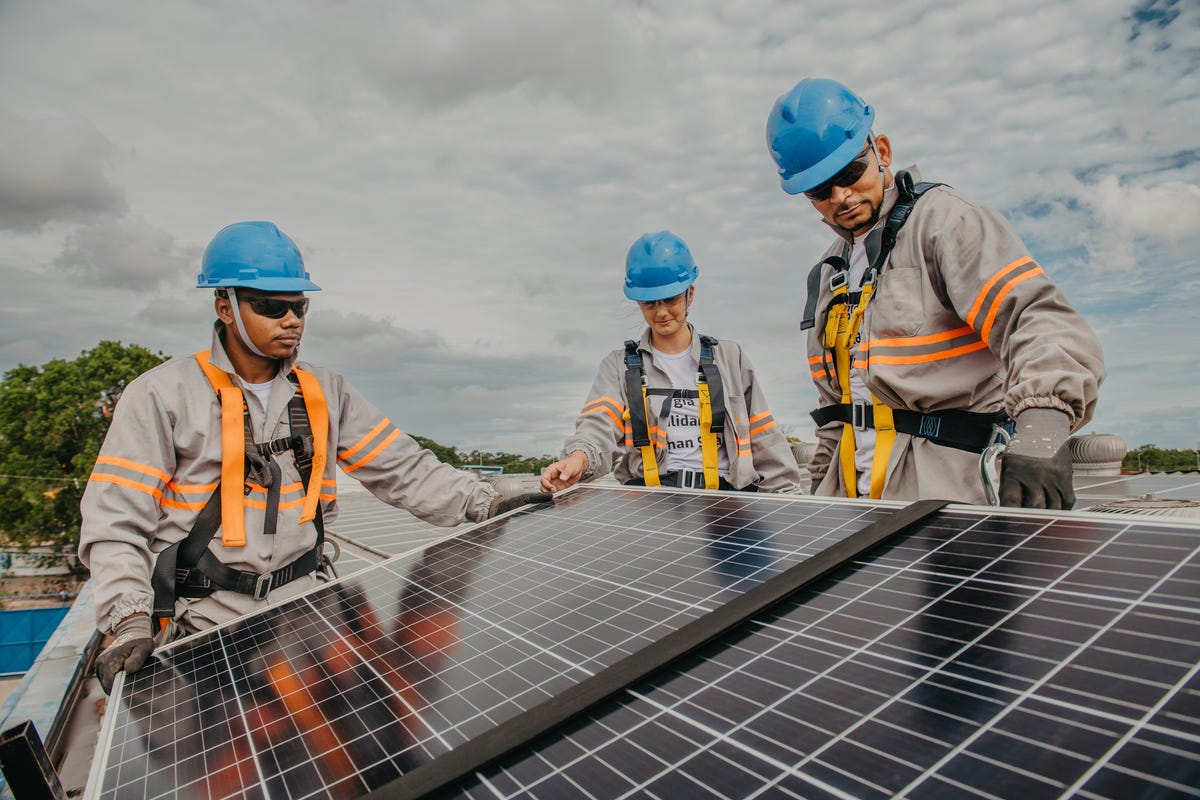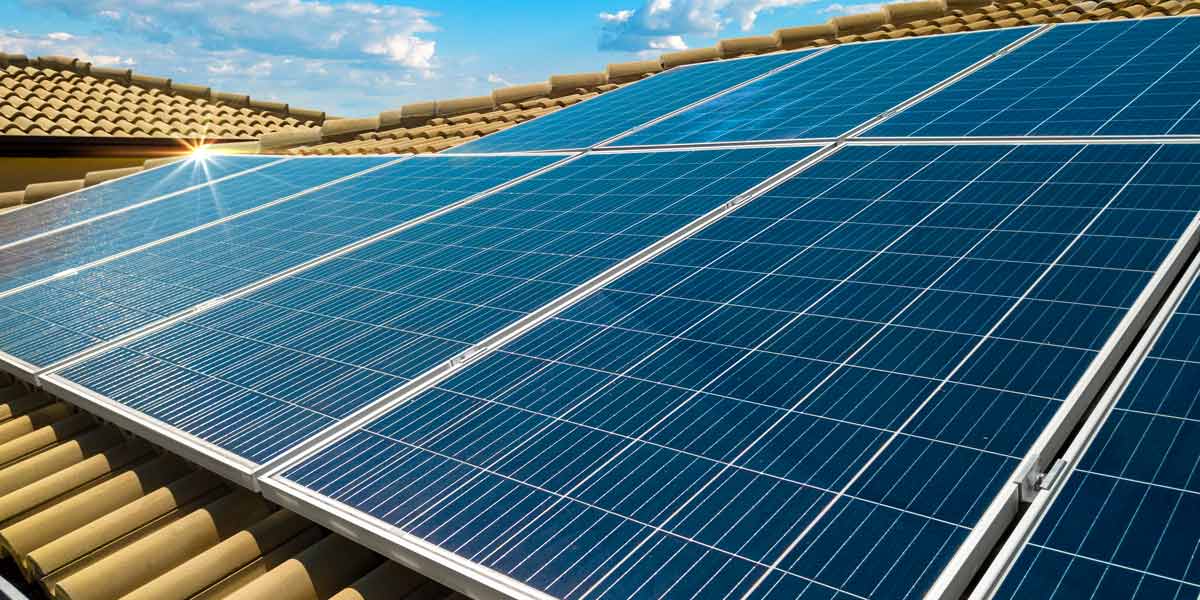Virginia Clean Energy Incentives: Lumina Solar Focuses On Offering Advanced Photovoltaic Solutions For Houses And Organizations
History and Founding
Have you ever questioned how a photovoltaic panel company springs from a simple stimulate of motivation into a powerhouse of renewable resource? It frequently starts with a vision-- one fueled by a blend of innovation, determination, and a pinch of serendipity. The journey of many solar business mirrors the evolution of the innovation itself: from bulky, inefficient panels to sleek, high-efficiency marvels utilizing the sun's bounty.
The Early Days
In the late 20th century, when solar energy was still a niche idea, pioneers planted seeds for what would end up being a global movement. Envision a small workshop filled with curious engineers, tirelessly try out photovoltaic cells. Their enthusiasm was palpable, typically driven by a desire to fight environment change and decrease dependence on fossil fuels.
One such anecdote has to do with a founder who, influenced by an outdoor camping journey, understood that even in remote areas, the sun might power vital devices. This basic observation triggered a business's objective to equalize access to tidy energy.
Founding Concepts

- Innovation: Continually pressing the limits of solar technology to improve effectiveness and resilience.
- Sustainability: Dedicating to eco-friendly production and lowering carbon footprints.
- Ease of access: Making renewable energy services economical and practical for daily users.
Milestones in Development
| Year | Key Occasion |
|---|---|
| 1985 | Company founded in a small garage, concentrating on research and advancement. |
| 1995 | Industrial solar panel item released, gaining regional attention. |
| 2005 | Expanded to international markets, accepting global eco-friendly energy goals. |
| 2015 | Presented advanced photovoltaic panel technology with enhanced energy conversion. |
Isn't it remarkable how these incremental actions, often neglected, shape the energy landscape today? The photovoltaic panel company story is not simply about technology; it has to do with a relentless quest for a brighter, cleaner future.

Innovations in Photovoltaic Panel Technologies
Ever discovered how some photovoltaic panels shine brighter and last longer? It's not magic; it's the science of photovoltaic efficiency. Modern photovoltaic panel business invest greatly in technologies like bifacial cells, which record sunlight from both sides, enhancing energy harvest without expanding roofing space. Have you ever wondered why some panels perform better on cloudy days? That's due to advances in thin-film solar technology, which prospers under diffused light conditions.
Product Variations Tailored to Special Needs
One size never ever fits all. Photovoltaic panel suppliers now use:
- Monocrystalline panels for optimum efficiency and smooth looks, ideal for space-constrained roofs.
- Polycrystalline panels, which provide an economical option without sacrificing excessive output.
- Building-integrated photovoltaics (BIPV), merging solar tech flawlessly into architectural components like windows and facades.
Picking the best item isn't almost upfront cost; it has to do with matching your environment, energy goals, and long-lasting savings. For example, homes shaded by trees require panels that master low-light circumstances, something many overlook until energy costs climb all of a sudden.
Technical Tips for Optimal Choice
- Assess the temperature coefficient-- lower worths mean panels lose less performance on hot days.
- Try to find panels with improved anti-reflective coatings to maximize light absorption.
- Consider the panel's guarantee not simply for problems, but for ensured power output over years.
- Do not ignore the importance of the inverter innovation coupled with the panels; it can make or break your system's efficiency.
Beyond Panels: Emerging Trends
Think of solar panels that adjust their angle automatically to go after the sun-- tracking systems are becoming more accessible, increasing yield substantially. Or solar tiles that blend undetectably into your roofline, changing your home into a silent, self-dependent power generator. These developments are improving what a photovoltaic panel business uses-- not simply products, however incorporated energy options.
Market Presence and Global Operations
Ever wonder why some solar panel companies seem to sprout up in every corner of the globe while others hardly make a ripple? The distinction lies not simply in innovation however in mastering the art of browsing varied markets. Expanding worldwide resembles planting seeds in different environments-- you must comprehend each environment's special conditions to prosper.
Take, for instance, the elaborate dance of logistics and supply chain management. Shipping panels halfway throughout the world isn't practically range; it's about timing, customs, tariffs, and adjusting to regional need changes. A company with robust worldwide operations prepares for these variables, ensuring panels show up on schedule without inflating expenses. This foresight is no small task and frequently separates industry leaders from followers.
Secret Techniques for Expanding Market Existence
- Localized manufacturing: Developing production centers near target markets lowers shipping hold-ups and import intricacies.
- Strategic partnerships: Teaming up with local firms speeds up market penetration and develops trust.
- Adaptive product design: Customizing photovoltaic panel tech to weather, sun intensity, and facilities subtleties enhances performance and acceptance.
What about the human element? Solar panel companies operating globally should reconcile cultural differences and regulatory subtleties without losing sight of their core mission. For example, what operate in a sun-drenched desert might fail in a humid seaside region. Sometimes, the most innovative solution is merely listening-- soaking up local insights to improve technology and approach.
Experts frequently encourage a phased rollout rather than a shotgun growth. Why risk overextension when measured growth builds sustainable momentum? Scaling sensibly suggests balancing ambition with functional strength - Solar Panel Company Virginia. After all, in the race for sustainable energy dominance, persistence can be as valuable as speed
Ecological Impact and Sustainability Practices
When photovoltaic panels first emerged, numerous presumed they carried no ecological luggage. However, the truth is more nuanced. The production of photovoltaic cells involves uncommon earth metals and energy-intensive processes, which can leave a substantial carbon footprint before the panels even reach roofs. Yet, the true environmental expense depends greatly on the sustainability practices employed by the solar panel company throughout the lifecycle of their items.
How frequently do we pause to consider what occurs to photovoltaic panels at the end of their beneficial life? Unlike batteries or electronic devices, solar panels can last 25-30 years, read more but disposal and recycling paths remain underdeveloped in many regions. A business committed to minimizing environmental damage will have a robust plan for recycling photovoltaic products, salvaging important silicon, glass, and metals to prevent land fill accumulation.
Secret Sustainability Techniques
- Making use of low-impact production strategies that lessen water and energy usage.
- Implementing closed-loop systems to recycle production waste back into new panels.
- Participating in transparent supply chain audits to ensure ethical sourcing of raw materials.
- Designing panels for easier disassembly to assist future recycling efforts.
It's worth keeping in mind that some solar business have actually pioneered ingenious methods, such as integrating biodegradable components or using less harmful chemicals during fabrication. This not only reduces environmental pressure however also sets a precedent for the industry. The question remains: can the solar market really pivot towards a circular economy design without compromising effectiveness or affordability?
Specialist Tips for Assessing Sustainability
- Ask about the company's commitment to carbon-neutral manufacturing and whether they balance out emissions.
- Examine if they partner with accredited recycling facilities devoted to photovoltaic panel waste.
- Look for transparency reports detailing environmental effects and sustainability goals.
- Consider the longevity and service warranty of panels as an indirect procedure of resource performance.
In the end, choosing solar power ought to indicate more than simply slashing electricity bills; it has to do with supporting a future where energy is collected properly and waste is attentively handled. Solar panel business that accept this approach not just illuminate homes but also cast a brighter light on sustainable development.
Comments on “Top Guidelines Of Solar Panel Installation Virginia”